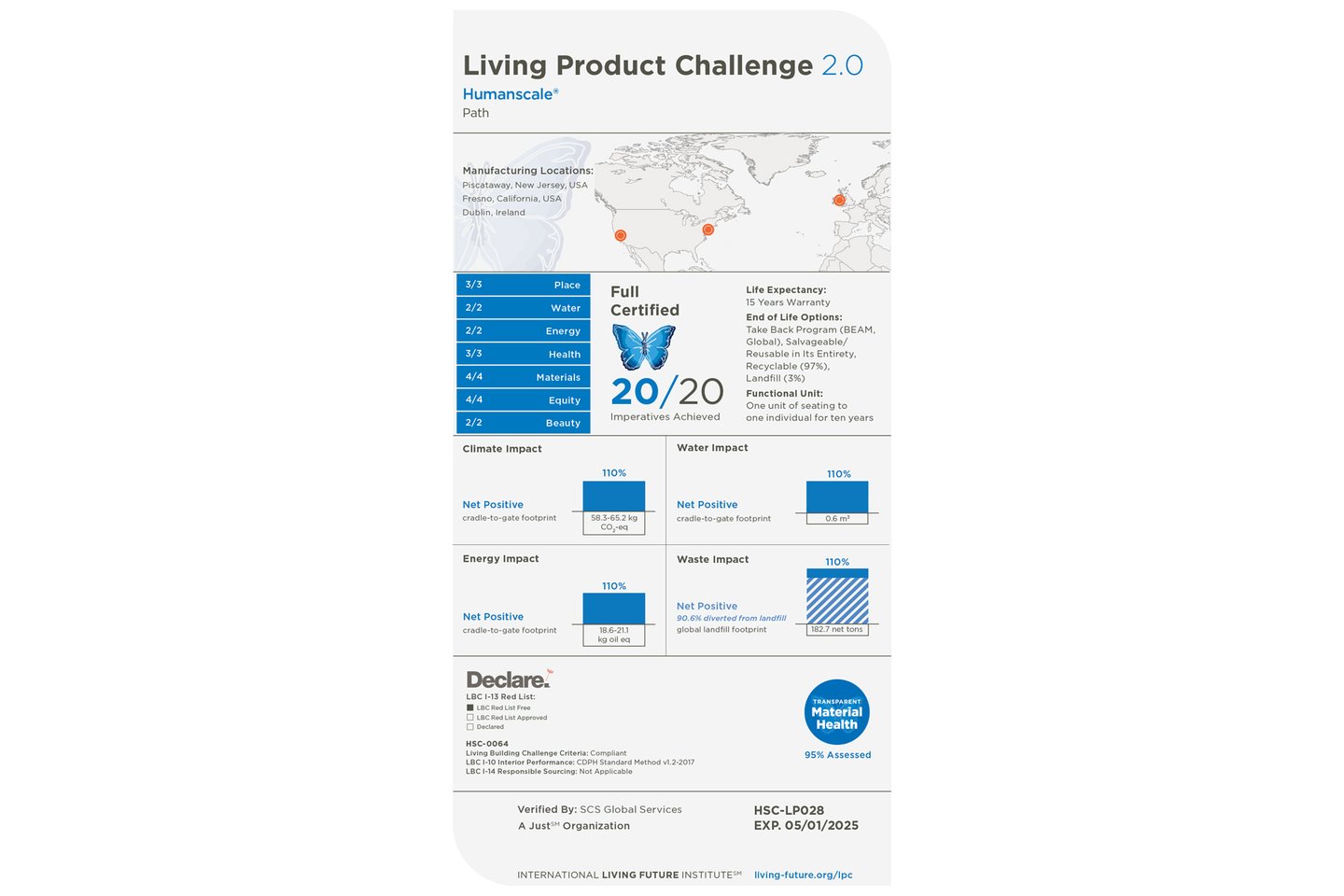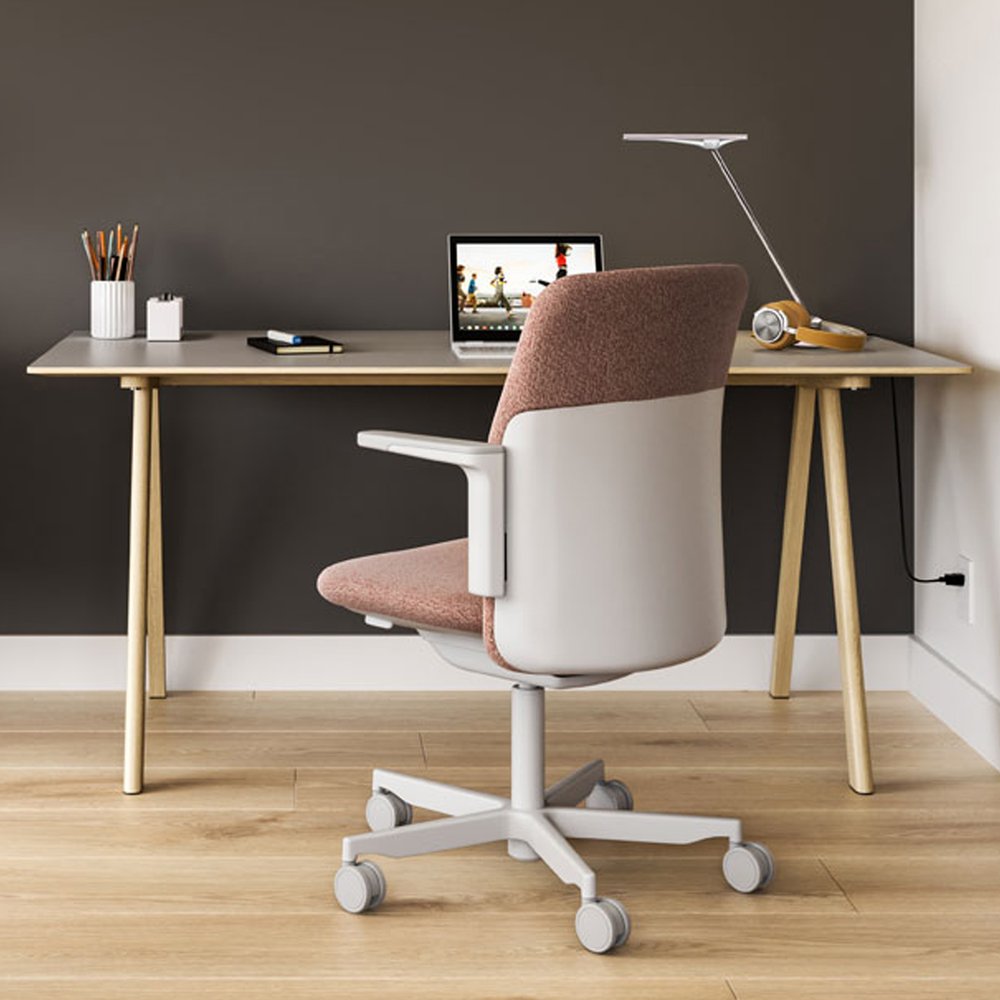
2 min read
Designer's Guide to Green Certifications
A Primer for Healthy Homes and Interiors. Who is gatekeeping wellness and sustainable design? WLLW looks at green certifications in brief.

2 min read
WLLW takes a look at the Living Product Challenge, a green framework and certification program that elevates product sustainability standards.
Dubbed the world's most advanced product sustainability standard, the Living Product Challenge (LPC) is a rigorous framework and certification program developed and issued by the International Living Future Institute. The ILFI is the same non-profit organization behind the Living Building Challenge Red List and Declare, a transparency label and database for healthy building products.
The LPC provides a blueprint for sustainability in manufacturing, covering a broad spectrum of products from textiles to building materials. Advocating for designs that are healthy, inspiring, and environmentally beneficial throughout their life cycles, the program spans seven social and environmental indicators known as 'Petals.'
This approach challenges manufacturers to fundamentally rethink product creation, not just to reduce harm but to proactively generate positive environmental and social impacts. The certification recognizes products that are free of toxins, uphold social responsibility, respect workers' rights, and contribute positively to the environment.

The Living Product Challenge imposes rigorous standards across a diverse array of products, from construction materials and interior finishes to furniture and textiles. Its goal is to uphold these high sustainability benchmarks, similar to those of the Living Building Challenge, ensuring every item contributes positively to both environmental health and occupant wellbeing.
This certification evaluates the product across its entire life cycle, from cradle to grave. Recipients are tasked to meet 20 imperatives in seven social and environmental impact areas, or Petals, which are designated as Water, Energy, Place, Beauty, Materials, Equity and Health + Happiness. Products not able to achieve full LPC certification can instead be honored for partial achievements, including Imperative certification (for meeting at least seven of LPC’s Core Imperatives) and Petal Achievement (Imperative certification plus completing at least three Petals.)
Living Product Challenge products are audited by an approved third-party assessor before receiving certification. This is valid for three years, and manufacturers are required to have annual check-ins to ensure ongoing compliance. While the ultimate goal is for products to achieve all 20 Imperatives, steps along the path to regenerative production are acknowledged and rewarded.


Holistic: The LPC takes a comprehensive approach to sustainability, considering the product's impact on the environment, society and the economy.
Innovation: Ingenuity is fostered by setting challenging standards and requiring products to go beyond compliance with existing regulations.
Transparency: The certification process requires companies to disclose information about the materials, production methods, and supply chain of their products.
Credibility: Developed and administered by the International Living Future Institute, a nonprofit organization with a strong reputation for promoting sustainability.
Complexity: The standards are intricate and can be difficult to understand for people who are not familiar with sustainability issues.
Cost: Obtaining LPC certification can be expensive, especially for small businesses.
Limited scope: Focused on individual products, it may not be suitable for companies that produce a wide range of products or that operate in industries where product certification is not common.
Enforcement: Upholding the LPC standards can be difficult, especially for companies that operate in countries with weak regulatory systems or that have limited resources for monitoring and auditing.
Photography: Motyl Przestrojnik Trawnik/Adobe, International Living Future Institute, Humanscale, Crossville Inc Tile

2 min read
A Primer for Healthy Homes and Interiors. Who is gatekeeping wellness and sustainable design? WLLW looks at green certifications in brief.

3 min read
WLLW delves into Declare label and the Red List as the demand for sustainable and healthy products intensifies, alongside the mounting pressure for transparent information for specifiers and consumers.